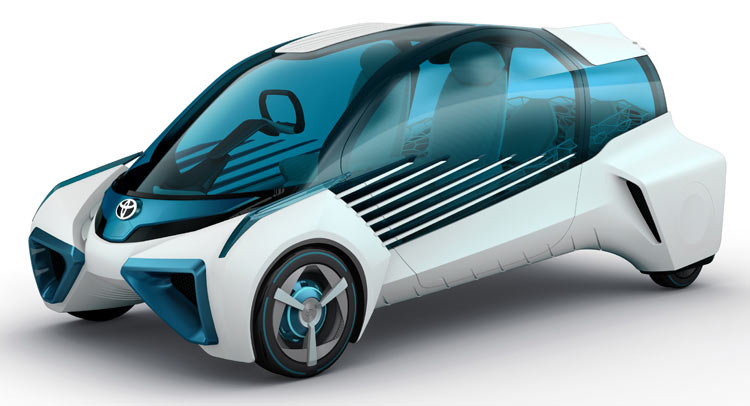With the FCV Plus Concept, Toyota is fast-forwarding to a future where hydrogen fuel cell cars will be as common as vehicles powered by internal combustion engines are today.
Scheduled to have its world debut at the Tokyo Motor Show later this month, the Toyota FCV Plus study is said to embody a society in which hydrogen energy is in widespread use. In that society, fuel cell cars will be more than just vehicles that will take people from A to B.
Toyota says clean generation of hydrogen from a wide range of primary energy sources will make local, self-sufficient power generation a global reality, and fuel cell vehicles will take on a new role as power sources within their communities. The automaker’s goal is to turn fuel cell vehicles from eco-cars into energy-cars.
This is exemplified by the FCV Plus, which can generate electricity directly from hydrogen stored outside the vehicle, in addition to its own hydrogen tank. As a result, the vehicle can be transformed into a stable source of electric power for use at home or away.
When the car is not being used as a means of transport, it is integrated into the local infrastructure and shares its power generation capabilities with communities.
On the FCV Plus Concept, the fuel cell stack is mounted between the front tires, and the hydrogen tank behind the rear seat. Thanks to the adoption of independent in-wheel motors in all four wheels, this allows for a spacious cabin despite the vehicle’s compact footprint.
As the car’s functional parts are concentrated at the front and the rear, the package creates “an optimal weight balance and a wide field of vision.”
Design-wise, the Toyota FCV Plus Concept looks futuristic, with a large glazed area, covered rear wheels and a simple yet high-tech interior.










